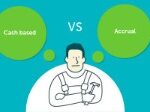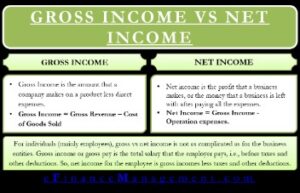Creating a Self-Bill Invoice on Behalf of Your Artist Curve Royalty Systems Knowledge Base
Content

Failure to show the IOSS registration number on a low value import into the EU can also lead to delays at customs and even double taxation. However, there are also some countries and business scenarios where the customer’s VAT registration must also be shown on the invoice. This has master data issues for a business, as it needs to first obtain the number from customers, validate it, store it in the ERP or billing system and then include it on the tax invoice. In the EU, where goods or services are provided cross-border to a counterparty in another EU member state, the customer’s valid VAT number together with the two-digit country ISO code must be shown on the invoice as well as on the EC Sales List.
What is self-billing invoice with example?
Self-billing is a commercial arrangement between a supplier and a customer in which the customer prepares the supplier's invoice and forwards a copy to the supplier with the payment.
Self-billing invoices can benefit clients and suppliers thanks to increased efficiency, faster payments, and improved accountability. That said, some rules need to be followed for them to be done correctly. If the invoice is not yet paid by us, you can send us a credit note to cancel it and then issue a new correct invoice to be paid. One is the cross industry invoice under development by the United Nations standards body UN/CEFACT and the other is Universal Business Language which is issued by Organization for the Advancement of Structured Information Standards . Implementations of invoices based on UBL are common, most importantly in the public sector in Denmark as it was the first country where the use of UBL was mandated by law for all invoices in the public sector.
What business units should be involved in the process of implementing e-invoices?
Specification of VAT for allowances and charges shall not be specified, as the VAT category stated for the invoice line itself, applies also to the allowances or charges of that line. If it is not clear to the receiver what scheme is used for the identifier, a conditional scheme identifier should be used, that shall be chosen from the Invoiced object identifier scheme. When reference is provided by the customer, the correct element shall contain the provided reference. Have a disclaimer on the Invoice that the Invoice has been assigned to a factor.

If this information is not supplied, the seller is the payment receiver. When payee information is sent this is indicating that a factoring situation is being documented. The invoice line net amount (BT-131) is as the name implies the net amount without VAT, and inclusive of line level allowance and charges. Document Reference Types are identifiers that were assigned to a document or document line by the Buyer, the Seller or by a third party.
Customer Reviews
The invoice is used to carry VAT related information from the Seller to the Buyer to enable the Buyer and Seller to correctly handle VAT booking and reporting. An invoice should contain sufficient information to enable the Buyer and any auditor to determine whether the invoice is correct from a VAT point of view. The invoice may specify articles with article number or article description. Can be used as basis for restructuring of in-house processes of invoices. OpenPeppol AISBL holds the copyright of this Peppol BIS, developed and published subject to the conditions of the agreement between the European Commission and CEN allowing derivate works to be developed and distributed with no additional licensing requirements.
- You are accountable for this so you should run checks to ensure each customer is applying the correct rate of VAT on each transaction.
- Transactional data provides a timely and reliable overview of the business sector, enabling governments to rely on analytical data in the decision-making process.
- Commissions are processed on a weekly cycle, and the payment cycle takes approximately 10 days from the weekly cut-off, so depending on timing, payments should generally be received 2-3 weeks after check-out.
- Self-billing invoices are created by the customers, so they choose the format good for their financial administration.
- Document/message reporting invoice discrepancies indentified by the forwarder.
- The allowed maximum number of decimals for the Document level allowance amount (BT-92) is 2.
A Payment account identifier (BT-84) shall be present if Credit transfer (BG-17) information is provided in the Invoice. A Payment instruction (BG-16) shall specify the Payment means type code (BT-81). Item net price MUST equal (Gross price – Allowance amount) when gross price is provided. Allowance/charge percentage MUST be provided when allowance/charge base amount is provided. Allowance/charge base amount MUST be provided when allowance/charge percentage is provided.
Self-Billed Invoices
We already stressed that this type of invoicing might become more difficult when there is a real-time reporting system in place. We will analyse this scenario taking into account the experience from Hungary, where real-time reporting has been in place since 2018. First of all, there should be a prior agreement between buyer and supplier with all conditions relating to the content and the issuance of the invoice. Furthermore, there should be agreed procedures for the acceptance by the supplier of the validity of the invoice. However, the exact way countries deal with this arrangement differs.
What is the purpose of self-billing?
Self-billing is popular primarily because it makes invoicing easier. By allowing the customer, rather than the supplier, to determine the value of a purchase and the VAT due on it, this can be completed after the goods have been delivered or the services supplied and the precise details known.
The VAT category tax amount (BT-117) in a VAT breakdown (BG-23) where VAT category code (BT-118) is “Standard rated” shall equal the VAT category taxable amount (BT-116) multiplied by the VAT category rate (BT-119). The VAT category tax amount (BT-117) in a VAT breakdown (BG-23) where VAT category code (BT-118) is “IPSI” shall equal the VAT category taxable amount (BT-116) multiplied by the VAT category rate (BT-119). The VAT category tax amount (BT-117) in a VAT breakdown (BG-23) where VAT category code (BT-118) is “IGIC” shall equal the VAT category taxable amount (BT-116) multiplied by the VAT category rate (BT-119). In an Invoice line (BG-25) where the Invoiced item VAT category code (BT-151) is “IGIC” the invoiced item VAT rate (BT-152) shall be 0 or greater than zero.
The invoice data contains customer part amounts, prices, and taxes. Self-billing is an arrangement between a supplier and a customer where the customer prepares the supplier’s invoice and forwards a copy to the supplier with the payment. This arrangement is often used between department stores and concessions or by digital platforms and marketplaces with their sellers. Not only must https://quick-bookkeeping.net/what-is-the-main-focus-of-managerial-accounting/ self-billed invoices meet all the usual invoicing requirements in that country, but there are generally additional requirements to make them valid for VAT purposes. For example, in the EU and UK, there must be a valid self-billing agreement in place. While self-billing can be an efficient way of doing business, there is risk involved if requirements are not fully understood or met.
- Declare that you are happy to accept self-billed invoices issued by your customer.
- Code is different from Identifier in that allowed values have standardized meanings that can be known by the recipient.
- At the moment PCI Security Standards Council has defined that the first 6 digits and last 4 digits are the maximum number of digits to be shown.
- The allowed maximum number of decimals for the Amount due for payment (BT-115) is 2.
- Today, we will focus on self-billing and how real-time reporting may have an impact on this type of arrangement.
ISDOC is a standard that was developed in the Czech Republic as a universal format for electronic invoices. On 16 October 2008, 14 companies and the Czech government signed a declaration to use this format within one year in their products. The XML message format for electronic invoices has been used since the inception of XML in 1998. Open Application Group Integration Specification has included an invoice since 2001. The Open Applications Group has a working relationship with UN/CEFACT where OAGi and its members participate in defining many of the Technology and Methodology specifications. OAGi also includes support for these Technology and Methodology specifications within OAGIS.
It should be noted that invoice reporting in the Spanish SII is only required for companies with a turnover higher than €6 million. Such companies are usually those emitting a self-billing invoice and not those receiving it. Timesheet – Invoices for hourly services issued by businesses such as lawyers and consultants often pull data from a timesheet. A timesheet invoice may also be generated by Operated equipment rental companies where the invoice will be a combination of timesheet based charges and equipment rental charges. Pro forma invoice – In foreign trade, a pro forma invoice is a document that states a commitment from the seller to provide specified goods to the buyer at specific prices. It is not an actual invoice, and thus the seller does not record a pro forma invoice as an account receivable and the buyer does not record a pro forma invoice as an account payable.
- In an Invoice line (BG-25) where the Invoiced item VAT category code (BT-151) is “IGIC” the invoiced item VAT rate (BT-152) shall be 0 or greater than zero.
- In terms of mandatory e-invoicing as defined by numerous governments, PDF invoices do not generally qualify as e-invoices.
- Jason Ding is a seasoned accountant with over 15 years of progressive experience in senior finance and accounting across multiple industries.
- We have set out our top ten tax invoicing pitfalls to be aware of if you do business internationally.
For BT-49 and BT-34 Sellers and Buyers Electronic address identifiers the EN mandates use of a code list to be maintained by Connecting Europe Facility . Valid unit codes shall be from UN/ECE Recommendation 20, Revision 11 . Unless codes for unit of measure are not in common daily use, implementers should as necessary provide a function for clarification of codes when invoices are visualised. Document/message claiming payment for the supply of metered services (e.g., gas, electricity, etc.) supplied to a fixed meter whose consumption is measured over a period of time. Document/message issued by a creditor to a debtor to request payment of one or more invoices past due.
Indirect Tax Automation
The element is used for the reference of who ordered the products/services. Example being the name of the person ordering, employee number or a code identifying this person or department/group. Your ref is often used for internal routing at recipient, and hence it is important to fill Self Billing Of Tax Invoices this element with the correct values according to the need of the recipient. This unique purchase order number should be supplied as the order reference on the invoice. The invoice should provide sufficient information to look up relevant existing documentation, electronic or paper.






